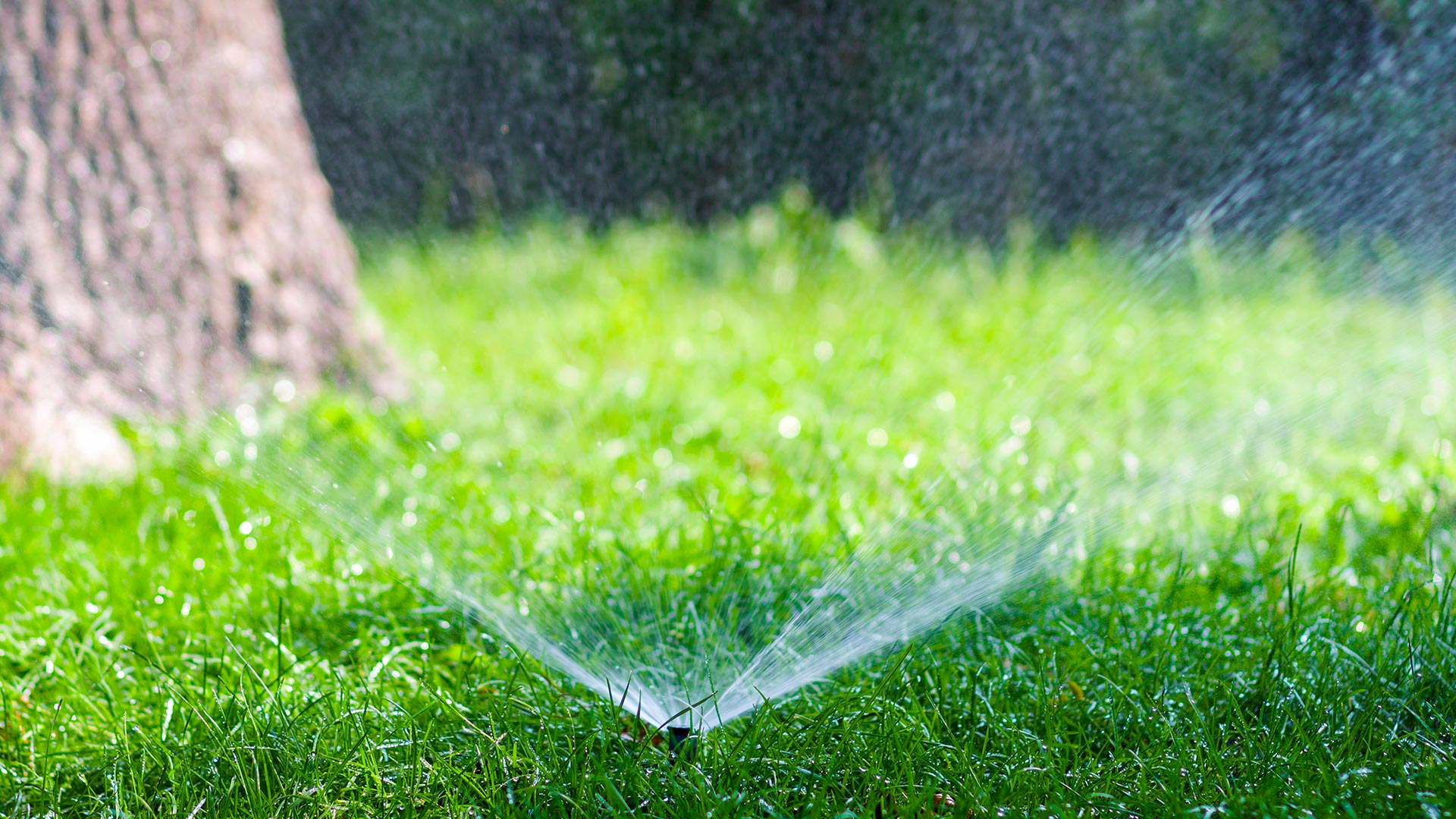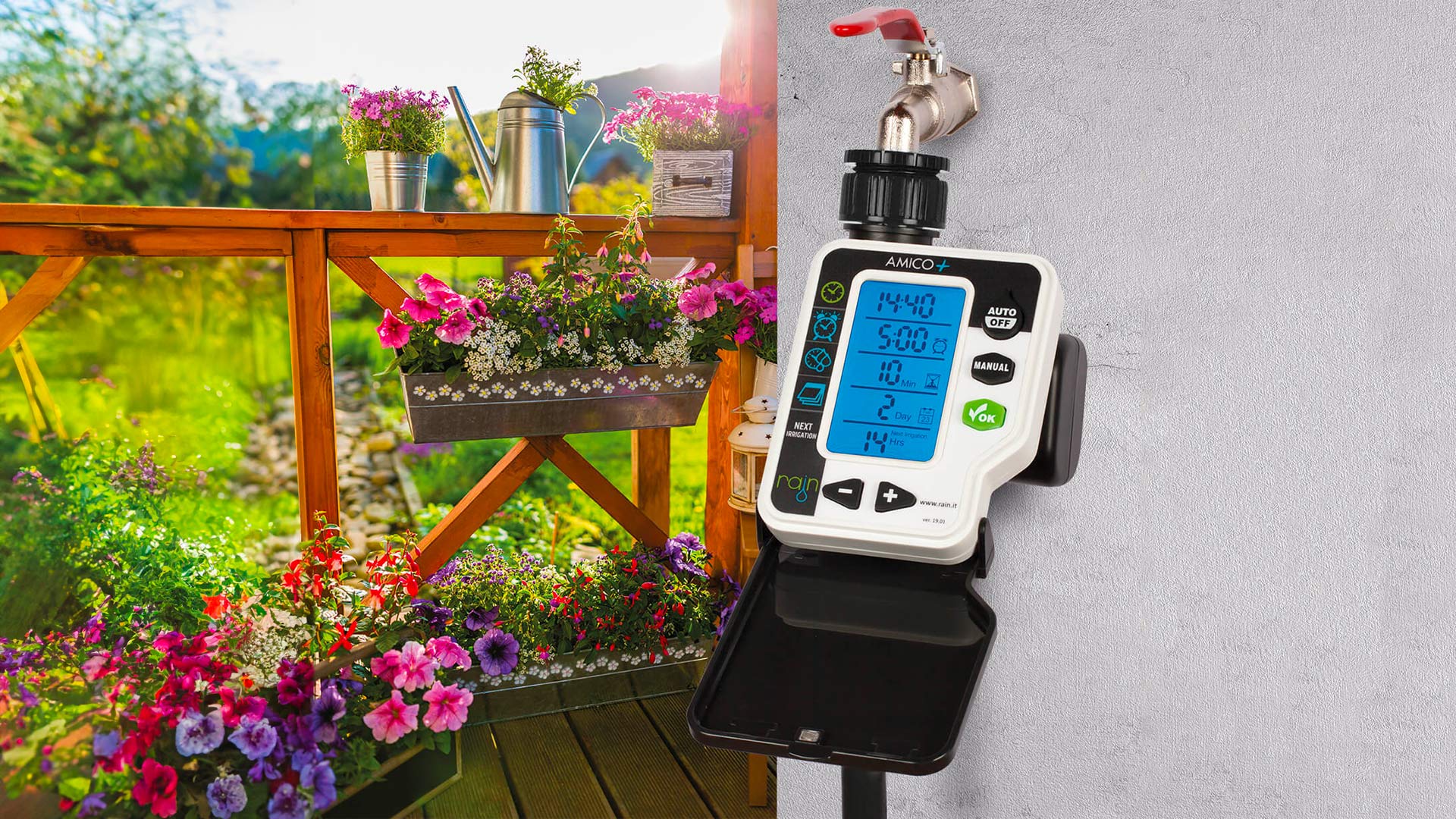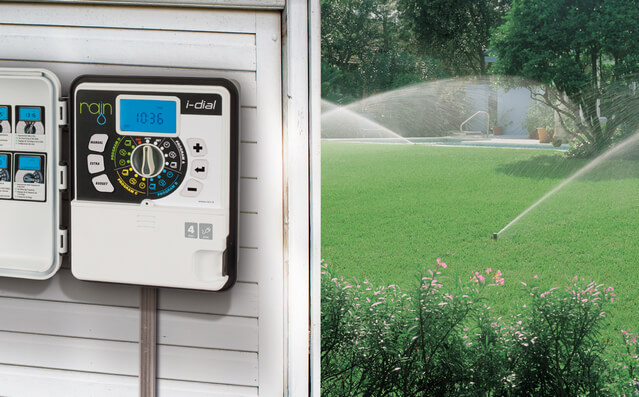
Blog
Guide to choosing a controller: categories, system types and water requirements
14 September 2023
Irrigation is one of the fundamental agronomic techniques for the well-being of our plants and lawns. The irrigation controller plays a key role in this aspect as it allows the irrigation to be managed automatically, without the need to be physically present in the garden to take care of it.
The control unit, often also called a controller or timer, is the ‘brain’ of the irrigation system: it not only opens and closes the system, but also allows for the best time to be chosen to deliver water based on plant-soil-climate factors.
How to distinguish between types of control units
An initial distinction between the various types of control units can be made by looking at two main factors: power supply and installation. As far as the type of power supply is concerned, there are two orders of control units: alternating current, if equipped with a 24 Vac transformer, and direct current (known as 9 Vdc) if equipped with a battery, which may be alkaline or lithium (which in some cases may also be rechargeable).
This first difference must be taken into account when choosing the solenoid valve: in fact, alternating current control units operate solenoid valves with a 24 Vac solenoid, while those operating with batteries operate bistable 9 Vdc solenoid valves (also called ‘latching’).
The control units can then be categorised according to their place of installation into:
Wall-mounted controllers can be either 9 Vdc or 24 Vac, in the latter case further subdivided into indoor (indoor) or outdoor (outdoor) controllers. The former have the transformer outside the casing, the latter inside.
A further, recent classification concerns the way irrigation is managed. We are referring to smart controllers. Intelligent or smart controllers are those connected devices designed to intervene on the system remotely, through different connection modes: Bluetooth 5.0, Wi-Fi, 3G, etc.. They can have advanced functions compared to so-called ‘traditional’ control units.
Aspects to consider when choosing your control unit: installation and management
The choice of control unit must be made carefully and based on various considerations in the field. On the one hand, it is necessary to bear in mind the type of installation, i.e. whether there is electricity or not, whether there is a tap or not, the type of crop and the type of management control to be performed, and so on. On the other hand, it is also necessary to analyse one’s lifestyle needs and your physical on-site availability, i.e. whether one has the possibility and wishes to control the control unit manually or digitally from a remote location. On the basis of all these considerations, it is possible to lean towards one solution or another to find the best one for your garden.
A controller for every need: from the extreme simplicity of the Amico+ to the maximum flexibility of the Pure Vision
To meet the needs of every customer, from the least experienced to the most demanding, at Rain we have developed a complete range of control units. Below we will briefly illustrate one per type of installation:
1. Amico+ tap timer
This category of controllers is the ideal solution if you have a tap, as the word itself suggests, and what you need to irrigate is a simple flowerbed, vegetable garden or planters. If we also want programming to be quick and easy, we would certainly recommend Amico+: the numbers are clearly readable on the large backlit screen, the practical knob allows you to ‘navigate’ the information quickly, and to program it you only need to enter the data of the ‘3 Easy Steps’ methodology: when to start watering, for how much and how often, nothing else.
2. I-Dial wall-mounted control unit
If your requirement is to irrigate a lawn and you have an electrical outlet near the system, you can opt for a wall-mounted controller. If the outlet is located indoors, in the house but also in a tool shed in the garden for example, you can choose an indoor controller; if it is located outdoors you will need an outdoor controller, knowing that in this case you will need an electrician to certify the section of cable connecting the controller to the electrical outlet. If you are looking for simple but flexible programming, the I-Dial model is an excellent choice: the immediacy of the ‘3 Easy Steps’ methodology is complemented by the versatility of the extra functions that allow you to manage the rain sensor and the pump at 360°. It controls up to 12 solenoid valves with 4 programmes and 1 start each, making it perfect for residential applications.
3. Pure Vision cockpit control unit
You want to irrigate your garden but do not have an electrical outlet? Then a valve box controller is the solution for you. There are various models, some of them equipped with rechargeable lithium batteries to keep the system constantly running. This type offers two further advantages: lower maintenance costs due to the seasonal change of alkaline batteries and a consequent reduction in environmentally harmful waste. Also helping to preserve the planet are our sustainable charging systems, Luce Vision and Turbina Vision, which keep batteries charged by harnessing energy from the sun and the water of the system itself, respectively. If, in addition to recharging your controller in a sustainable manner, you also wish to control it digitally, Pure Vision is definitely the product you are looking for: it has a Bluetooth 5.0 connection and, when combined with the Nuvola Vision internet connection device, can also be managed via your home Wi-Fi network. The ideal product for those who dream of monitoring and acting on irrigation wherever and whenever they wish.
Discover the latest innovations
in irrigation systems!


